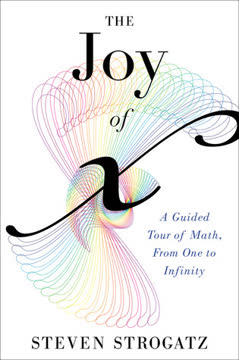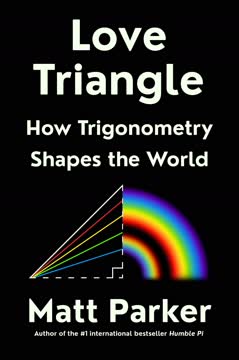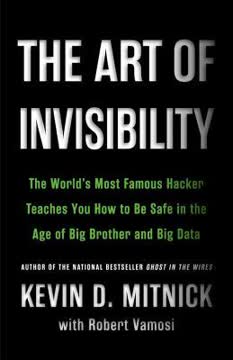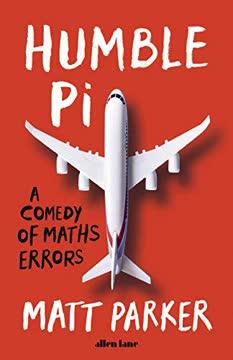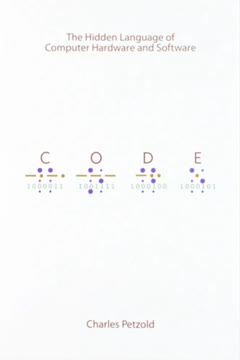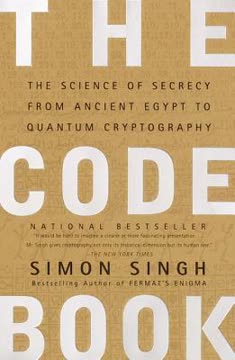نکات کلیدی
1. تکامل رمزنگاری: از رمزهای باستانی تا رمزنگاری مدرن
"برای هزاران سال، پادشاهان، ملکهها و ژنرالها به ارتباطات مؤثر برای اداره کشورها و فرماندهی ارتشهای خود وابسته بودهاند."
رمزهای باستانی. رمزنگاری، هنر نوشتن مخفی، نقش حیاتی در تاریخ بشر ایفا کرده است. رمزهای اولیه شامل:
- رمزهای جانشینی: جایگزینی هر حرف با حرف دیگر
- رمزهای جابجایی: تغییر ترتیب حروف
- استگانوگرافی: پنهان کردن وجود یک پیام
پیشرفتهای فناوری. با پیشرفت فناوری، روشهای رمزنگاری نیز توسعه یافتند:
- دستگاههای مکانیکی: دیسکهای رمز و ماشینهای روتور
- رمزنگاری مبتنی بر کامپیوتر: DES و دیگر الگوریتمهای متقارن
- رمزنگاری مدرن: سیستمهای کلید عمومی و رمزنگاری کوانتومی
تکامل رمزنگاری تحت تأثیر نبرد دائمی بین رمزنگاران و رمزگشایان بوده است، به طوری که هر پیشرفت در رمزنگاری با تکنیکهای جدید رمزگشایی مواجه شده است.
2. تلگرام زیمرمن: چگونه رمزنگاری جنگ جهانی اول را تغییر داد
"اگر دشمن قادر به شنود هر پیام رادیویی باشد، پس رمزنگاران باید راهی برای جلوگیری از رمزگشایی این پیامها پیدا کنند."
اشتباه دیپلماتیک. تلگرام زیمرمن یک ارتباط دیپلماتیک مخفی بود که پیشنهاد یک اتحاد نظامی بین آلمان و مکزیک را در صورت ورود ایالات متحده به جنگ جهانی اول مطرح کرد.
شکست رمزنگاری. این تلگرام توسط اطلاعات بریتانیا شنود و رمزگشایی شد که منجر به:
- افشای نیتهای آلمان
- افزایش احساسات ضد آلمانی در ایالات متحده
- ورود ایالات متحده به جنگ جهانی اول
این حادثه اهمیت حیاتی ارتباطات امن در جنگ و دیپلماسی را نشان داد و نشان داد که چگونه رمزنگاری میتواند مسیر تاریخ را تغییر دهد.
3. ماشین انیگما: رمزنگاری آلمانی و تلاشهای رمزگشایی متفقین
"ماشین انیگما به قدری امن بود که امکان یک استاندارد رمزنگاری را فراهم میکرد که احتمالاً فراتر از تواناییهای رمزگشایی NSA بود."
شگفتی مکانیکی. ماشین انیگما یک دستگاه الکترو-مکانیکی پیچیده بود که توسط آلمان نازی برای رمزگذاری ارتباطات نظامی در طول جنگ جهانی دوم استفاده میشد.
تلاشهای متفقین. شکستن رمز انیگما شامل:
- ریاضیدانان لهستانی: پیشرفتهای اولیه در درک انیگما
- رمزگشایان بریتانیایی در بلچلی پارک: توسعه ماشین بمب
- ضبط ماشینهای انیگما و کتابهای رمز: ارائه اطلاعات حیاتی
رمزگشایی موفق پیامهای انیگما اطلاعات حیاتی را برای متفقین فراهم کرد و تأثیر قابل توجهی بر نتیجه جنگ جهانی دوم داشت و جانهای بیشماری را نجات داد.
4. پیشرفت آلن تورینگ: شکستن انیگما و تولد علم کامپیوتر
"کار تورینگ به اوج خود در مقاله مشهورش، 'در مورد اعداد قابل محاسبه'، منتشر شده در سال 1937، رسید."
نبوغ رمزگشایی. آلن تورینگ سهم قابل توجهی در شکستن رمز انیگما داشت:
- توسعه بمب: یک دستگاه الکترو-مکانیکی برای یافتن تنظیمات انیگما
- بهبود روشهای لهستانی: افزایش کارایی تلاشهای رمزگشایی
- استفاده از تحلیل آماری: به کارگیری نظریه احتمال در رمزگشایی
پدر علم کامپیوتر. کار تورینگ در مسئله انیگما منجر به:
- مفهوم ماشین تورینگ جهانی: مبنای نظری برای کامپیوترهای مدرن
- توسعه کامپیوترهای اولیه: کلاسیوس، که برای شکستن سایر رمزهای آلمانی استفاده میشد
- بنیانگذاری هوش مصنوعی: آزمون تورینگ برای هوش ماشین
کار انقلابی تورینگ نه تنها به پیروزی در جنگ کمک کرد بلکه پایهگذار علم کامپیوتر مدرن و هوش مصنوعی شد.
5. کدگویان ناواهو: رمزنگاری زبانی غیرقابل شکستن در جنگ جهانی دوم
"ناواهو تنها قبیلهای در ایالات متحده است که در بیست سال گذشته به دانشجویان آلمانی آلوده نشده است."
رمزنگاری زبانی. نیروی دریایی ایالات متحده سخنرانان ناواهو را برای توسعه و استفاده از کدی مبتنی بر زبان پیچیده خود در طول جنگ جهانی دوم استخدام کرد.
کد غیرقابل شکستن. کد ناواهو مؤثر بود زیرا:
- ساختار زبان پیچیده: درک آن برای غیر بومیها دشوار بود
- عدم وجود فرم نوشتاری: عدم مستندات برای مطالعه دشمنان
- واژگان نظامی ویژه توسعه یافته: استفاده از کلمات ناواهو برای اصطلاحات نظامی
کدگویان ناواهو نقش حیاتی در تأمین ارتباطات متفقین در جبهه اقیانوس آرام ایفا کردند و قدرت تنوع زبانی در رمزنگاری را نشان دادند.
6. رمزگشایی خطهای باستانی: شکستن هیروگلیفها و خط B
"رمزگشاییها بهطور قابل توجهی از دستاوردهای درخشان علم هستند."
سنگ روزتا. رمزگشایی هیروگلیفهای مصری با کمک:
- کشف سنگ روزتا: ارائه متنهای موازی به زبانهای هیروگلیف، دموطیک و یونانی
- کار ژان-فرانسوا شامپولین: شناسایی ماهیت آوایی هیروگلیفها
معمای خط B. رمزگشایی خط B، یک خط باستانی از کرت، شامل:
- مایکل ونتریس: زبانشناس آماتوری که کد را شکسته است
- شناسایی خط B به عنوان یک شکل اولیه از یونانی
- تلاش مشترک با جان چادویک برای تکمیل رمزگشایی
این دستاوردها در رمزگشایی خطهای باستانی پنجرههایی به تمدنهای گمشده گشود و قدرت تحلیل زبانی و رمزنگاری را نشان داد.
7. مشکل توزیع کلید: نقطه ضعف رمزنگاری متقارن
"قبل از اینکه دو نفر بتوانند یک راز (یک پیام رمزگذاری شده) را تبادل کنند، باید قبلاً یک راز مشترک (کلید) داشته باشند."
رمزنگاری متقارن. روشهای رمزنگاری سنتی نیاز دارند که هر دو طرف یک کلید مخفی یکسان برای رمزگذاری و رمزگشایی پیامها داشته باشند.
چالشهای توزیع کلید:
- تبادل امن کلید: دشواری در انتقال امن کلیدها
- مدیریت کلید: پیچیدگیهای ذخیره و بهروزرسانی تعداد زیادی کلید
- مشکلات مقیاسپذیری: مشکلات در مدیریت کلیدها برای شبکههای بزرگ
مشکل توزیع کلید با رشد ارتباطات الکترونیکی به طور فزایندهای اهمیت پیدا کرد و کاربرد عملی رمزنگاری متقارن را در بسیاری از سناریوها محدود کرد.
8. رمزنگاری کلید عمومی: راهحل انقلابی برای توزیع کلید
"دیفی نوع جدیدی از رمز را اختراع کرده بود که شامل یک کلید نامتقارن به اصطلاح بود."
تغییر پارادایم. رمزنگاری کلید عمومی، که توسط ویتفیلد دیفی و مارتین هلمن ابداع شد، رمزنگاری را با:
- حذف نیاز به تبادل امن کلید
- استفاده از کلیدهای جداگانه برای رمزگذاری و رمزگشایی
- اجازه برقراری ارتباط امن بدون رازهای مشترک قبلی
مفاهیم کلیدی:
- کلید عمومی: بهطور آزاد برای رمزگذاری توزیع میشود
- کلید خصوصی: بهطور مخفی برای رمزگشایی نگهداری میشود
- توابع یکطرفه: عملیات ریاضی که انجام آن آسان اما معکوس کردن آن دشوار است
این پیشرفت مشکل توزیع کلید را حل کرد و راه را برای ارتباطات دیجیتال امن در عصر مدرن هموار کرد.
9. الگوریتم RSA: بنیاد ارتباطات امن مدرن
"RSA نفوذناپذیر بود."
الگوریتم انقلابی. الگوریتم RSA، که توسط ریورست، شامیر و آدلمن توسعه یافت، به یکی از پرکاربردترین سیستمهای رمزنگاری کلید عمومی تبدیل شد.
ویژگیهای کلیدی:
- مبتنی بر دشواری تجزیه اعداد اول بزرگ
- ارائه رمزگذاری و امضاهای دیجیتال
- امنیت مقیاسپذیر: افزایش اندازه کلید برای رمزگذاری قویتر
تأثیر گسترده:
- امکان تجارت الکترونیک امن و بانکداری آنلاین را فراهم کرد
- ارتباطات امن در اینترنت را تسهیل کرد
- به بنیاد بسیاری از پروتکلهای رمزنگاری مدرن تبدیل شد
پایه ریاضی زیبا و کاربرد عملی الگوریتم RSA آن را به سنگ بنای ارتباطات دیجیتال امن تبدیل کرد و رشد اینترنت و تجارت الکترونیک را ممکن ساخت.
آخرین بهروزرسانی::
FAQ
What's The Code Book about?
- Exploration of Cryptography's History: The Code Book by Simon Singh explores the evolution of cryptography from ancient Egypt to modern quantum cryptography, highlighting the ongoing battle between code-makers and codebreakers.
- Key Figures and Events: The book features significant figures like Mary Queen of Scots, Alan Turing, and pivotal events such as the breaking of the Enigma cipher during WWII.
- Impact on Society: Singh emphasizes how cryptography has influenced historical events, wars, and political intrigue, showcasing its importance in maintaining secrecy and security in communication.
Why should I read The Code Book?
- Engaging Storytelling: Simon Singh combines scientific explanation with captivating storytelling, making complex topics accessible and enjoyable for readers.
- Rich Historical Context: The book provides a thorough historical context, allowing readers to understand the significance of cryptography in shaping world events.
- Relevance to Modern Issues: With the rise of digital communication and privacy concerns, the themes in The Code Book are more relevant than ever, helping readers navigate contemporary security issues.
What are the key takeaways of The Code Book?
- Evolution of Codes and Ciphers: The book illustrates the ongoing evolution of codes and ciphers, likened to an arms race between codemakers and codebreakers.
- Importance of Key Management: Singh emphasizes the significance of key management in cryptography, particularly in the context of the Vigenere cipher and the onetime pad.
- Cryptography's Role in History: Cryptography has played a crucial role in historical events, influencing battles, political decisions, and even the outcomes of wars.
What are the best quotes from The Code Book and what do they mean?
- "Nothing is as exciting as a secret.": This quote encapsulates the allure of cryptography and the human fascination with secrets, reflecting the motivation behind developing codes and ciphers.
- "The urge to discover secrets is deeply ingrained in human nature.": Singh highlights the fundamental human desire to uncover hidden knowledge, driving both the creation and breaking of cryptographic systems.
- "The history of codes is so inordinately rich.": This quote emphasizes the depth and complexity of cryptographic history, suggesting that understanding it can provide valuable insights into human behavior and societal developments.
How does Simon Singh explain the cipher of Mary Queen of Scots in The Code Book?
- Mary's Use of Ciphers: Singh details how Mary Queen of Scots used ciphers to communicate with conspirators, believing her messages were secure.
- Walsingham's Codebreaking: The book describes Sir Francis Walsingham's efforts to intercept and decipher Mary's letters, showcasing early codebreakers' skills.
- Impact of Cipher Strength: Singh illustrates how the strength of a cipher can determine the fate of individuals and nations, as seen in Mary's case.
What is the significance of the Vigenere cipher in The Code Book?
- Polyalphabetic Nature: The Vigenere cipher introduced a polyalphabetic approach to encryption, making it more secure than monoalphabetic ciphers.
- Babbage's Breakthrough: Singh highlights Charles Babbage's successful cryptanalysis of the Vigenere cipher, marking a pivotal moment in cryptography.
- Foundation for Future Ciphers: The Vigenere cipher laid the groundwork for future cryptographic systems, influencing the design of more advanced ciphers.
How did the Allies break the Enigma cipher according to The Code Book?
- Polish Contributions: Polish cryptanalysts, particularly Marian Rejewski, made significant early breakthroughs in understanding the Enigma's mechanics.
- British Efforts at Bletchley Park: The British, led by figures like Alan Turing, developed bombes to automate the process of finding the daily keys used in the Enigma.
- Espionage and Intelligence: The capture of codebooks and insights from spies provided critical information that aided in breaking the cipher.
What is public key cryptography as explained in The Code Book?
- Asymmetric Key System: Public key cryptography uses two keys: a public key for encryption and a private key for decryption, allowing secure communication without prior key exchange.
- Key Distribution Problem Solved: This method eliminates the need for secure key distribution, a significant challenge in traditional symmetric encryption.
- RSA Algorithm: The book details the RSA algorithm, foundational to modern secure communications, illustrating the principles of public key cryptography.
How does the RSA algorithm work in The Code Book?
- Choosing Prime Numbers: The RSA algorithm begins with selecting two large prime numbers, p and q, which are multiplied to produce N, part of the public key.
- Public and Private Keys: A public key is created using N and another number, e, while the private key, d, is derived from these values and kept secret.
- Encryption and Decryption: To encrypt a message, the sender computes the ciphertext using the formula C = M^e (mod N), and the recipient decrypts it using their private key.
What is the significance of the Diffie-Hellman-Merkle key exchange in The Code Book?
- Key Exchange Method: The Diffie-Hellman-Merkle key exchange allows two parties to securely share a secret key over a public channel.
- Foundation for Public Key Cryptography: This key exchange laid the groundwork for public key cryptography by demonstrating that secure key distribution is possible.
- Real-World Applications: The method is widely used in secure communication protocols, including SSL/TLS for web security.
How does The Code Book address modern cryptography?
- Relevance of Encryption Today: Singh discusses the increasing importance of cryptography in the digital age, where information security is paramount.
- Quantum Cryptography: The book explores the emerging field of quantum cryptography, which promises to revolutionize secure communication.
- Balancing Privacy and Security: Singh raises critical questions about the balance between individual privacy and national security in modern cryptography.
How does The Code Book relate to the future of privacy?
- Emerging Technologies: The book discusses advancements in cryptography, such as quantum cryptography, which promise to enhance privacy.
- Public Awareness: Singh emphasizes the importance of public understanding of cryptography and its implications for privacy.
- Policy Implications: The future of privacy will depend on how governments regulate encryption technologies, balancing security measures and individual rights.
نقد و بررسی
کتاب کتاب رمز به عنوان یک تاریخچه جذاب و قابل دسترس از رمزنگاری مورد تحسین قرار گرفته است. خوانندگان از توانایی سینگ در توضیح مفاهیم پیچیده بهطور واضح و ترکیب جزئیات فنی با داستانهای تاریخی جالب قدردانی میکنند. این کتاب از رمزهای باستانی تا رمزنگاری مدرن را پوشش میدهد و شامل شکستن کدهای جنگی و رمزنگاری کوانتومی است. بسیاری از منتقدان آن را بهطور غیرمنتظرهای سرگرمکننده و روشنگر یافتند، هرچند برخی به سن آن (منتشر شده در سال 2000) بهعنوان یک نقطه ضعف جزئی اشاره کردند. بهطور کلی، این کتاب بهطور گستردهای برای هر کسی که به کدها، تاریخ یا ریاضیات علاقهمند است، توصیه میشود.
Similar Books
